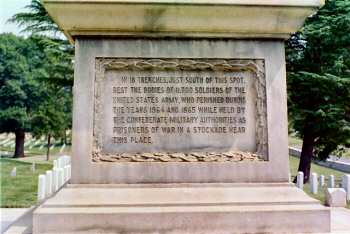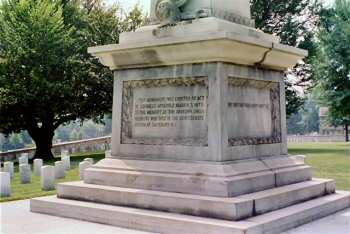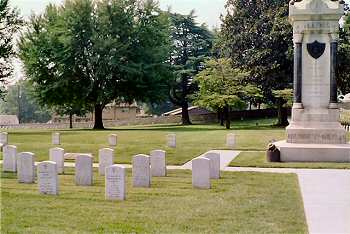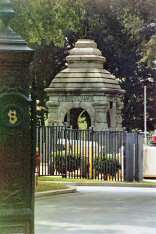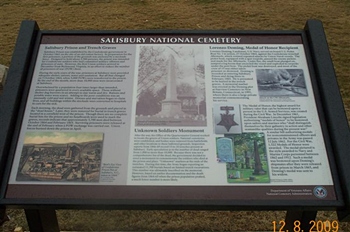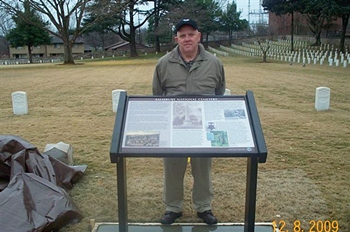|
The
National Cemetery in Salisbury occupies
the site of the cemetery that was next to the Confederate Prisoner
of War camp. The camp, opened in December of 1861 was originally
built to house 2,500 Union soldiers. By November of 1864 it held
more than 10,000 men. The death rate became appalling: 28% of
soldiers held there died in captivity. Burials before the
overcrowding had been in coffins and in separate graves. Records
exist that indicate military burial services were even given.
However, due to the large number
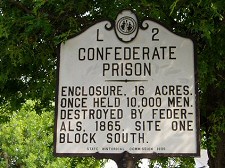 of men dying daily after October
1864 a mass burial system was initiated. The bodies were collected
daily and taken to the �dead house� to be counted and loaded onto
a one-horse wagon. At 2:00 PM each day this wagon of the dead
would be taken about � mile to an abandoned cornfield where the
men were buried. Eighteen trenches of approximately 240 feet each
were eventually needed. These trenches are visible today. of men dying daily after October
1864 a mass burial system was initiated. The bodies were collected
daily and taken to the �dead house� to be counted and loaded onto
a one-horse wagon. At 2:00 PM each day this wagon of the dead
would be taken about � mile to an abandoned cornfield where the
men were buried. Eighteen trenches of approximately 240 feet each
were eventually needed. These trenches are visible today.
On April 12, 1865 (3 days after Lee surrendered the Army of
Northern Virginia at Appomattox) Union General George Stoneman
arrived in Salisbury to free the Federals. By this time all of the
app. 8,000 remaining prisoners had been transferred elsewhere for
medical reason. The prison was burned,
the only one recorded as having been destroyed in this manner. The
bricks from the buildings were later sold and are said to have
been used in constructing some of the buildings on South Main
Street in downtown Salisbury. A small house reportedly used by the
Guards outside the main entrance still stands on Bank Street,
across the railroad tracks from the original; entrance to the
prison.
There were nine commandants during the Prison�s existence. The
most notable was Major John Henry Gee. In 1866 Major Gee was tried
for war crimes in Raleigh, North Carolina and found innocent. Gee
was the only commandant brought to trial other than Major Henry
Wirz of Andersonville, who was found guilty and hanged.
Prison
marker photo above courtesy of John Guss, NC |
 of men dying daily after October
1864 a mass burial system was initiated. The bodies were collected
daily and taken to the �dead house� to be counted and loaded onto
a one-horse wagon. At 2:00 PM each day this wagon of the dead
would be taken about � mile to an abandoned cornfield where the
men were buried. Eighteen trenches of approximately 240 feet each
were eventually needed. These trenches are visible today
of men dying daily after October
1864 a mass burial system was initiated. The bodies were collected
daily and taken to the �dead house� to be counted and loaded onto
a one-horse wagon. At 2:00 PM each day this wagon of the dead
would be taken about � mile to an abandoned cornfield where the
men were buried. Eighteen trenches of approximately 240 feet each
were eventually needed. These trenches are visible today